Key takeaways
- Newsletters foster a direct connection with fans by sharing personal stories and creative processes, transforming casual listeners into loyal supporters.
- Mailchimp simplifies the newsletter creation process with user-friendly design tools, automation, and audience segmentation, enhancing engagement.
- Effective newsletters balance informative content with storytelling and visual appeal, using natural calls to action to encourage fan participation.
- Analyzing newsletter performance helps refine content strategies by understanding audience preferences, ensuring ongoing relevance and engagement.
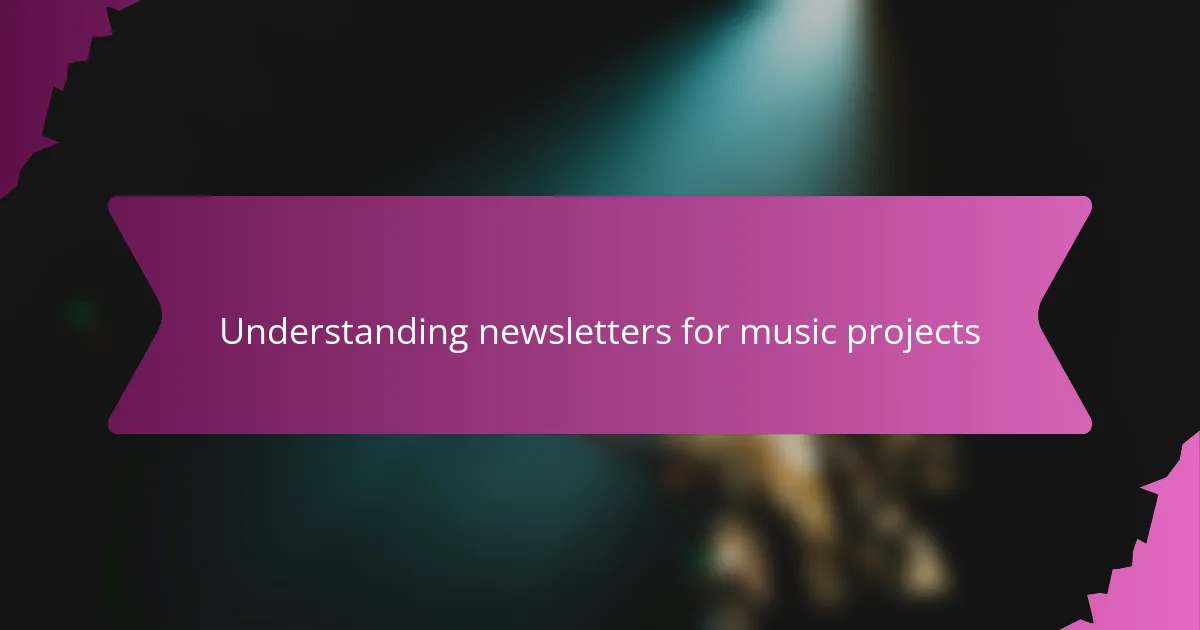
Understanding newsletters for music projects
Newsletters for music projects are more than just updates; they are a direct line to your audience’s hearts. I’ve found that sharing stories behind my songs or upcoming gigs in a newsletter creates a connection that social media alone can’t achieve. Have you ever wondered why some artists feel so close even before you hear a single note?
Building trust and excitement through newsletters has, in my experience, helped transform casual listeners into loyal fans. When I first started, I hesitated to share too much, fearing it might seem overexposed. However, opening up about the creative process made my audience feel valued and involved, which turned out to be a game changer.
Understanding your audience is key. Who are they? What music do they resonate with? I ask myself these questions before crafting each issue, ensuring the content speaks directly to their interests. A well-tailored newsletter doesn’t just inform—it invites readers to be part of the journey.
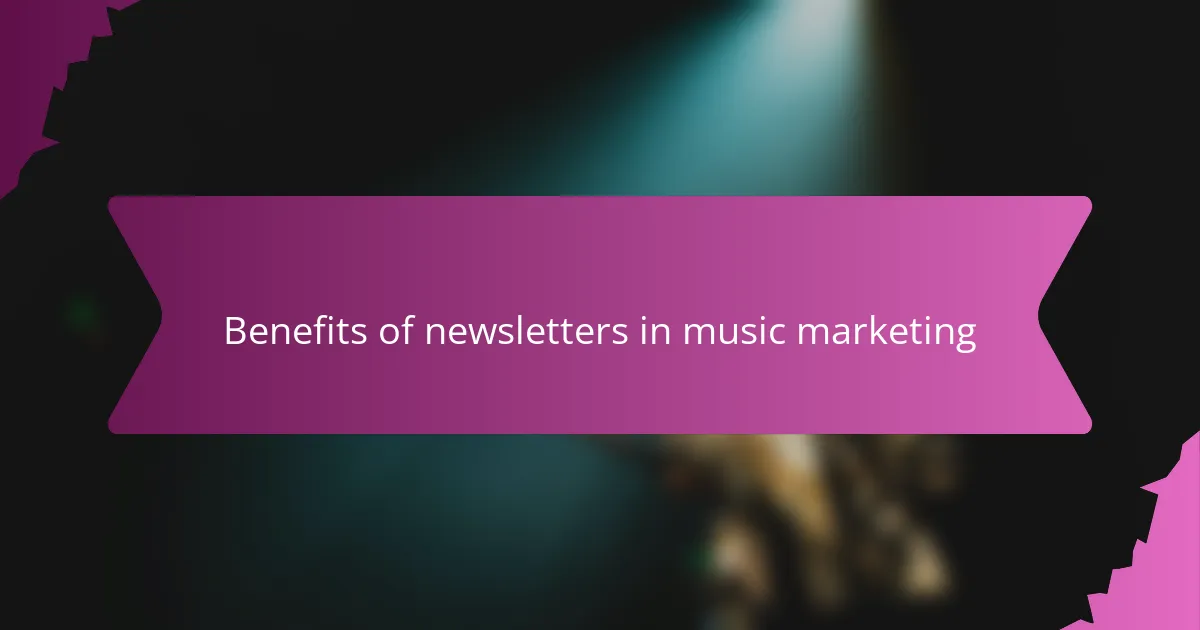
Benefits of newsletters in music marketing
One of the biggest benefits I’ve noticed with newsletters in music marketing is the ability to control your message without filters or algorithms getting in the way. Social media feeds change constantly, but a newsletter lands right in your fan’s inbox, making it harder to miss. Have you ever felt frustrated seeing your latest post buried under a sea of updates? Newsletters solve that problem.
Another advantage is how newsletters help deepen relationships over time. I remember sending a behind-the-scenes story about recording a song and getting replies from fans who said they felt they were part of the process. That kind of engagement is priceless. It’s like inviting your listeners into your creative world, making them feel personally connected.
Finally, newsletters offer a powerful way to drive action—whether it’s streaming a new track, buying merch, or showing up to a gig. Because your audience trusts you by this point, they’re more likely to respond. I often find that a well-timed newsletter can lead to noticeable spikes in support that social media posts just don’t generate. Have you ever wondered how some artists sell out shows with seemingly little fuss? Newsletters might be their secret weapon.
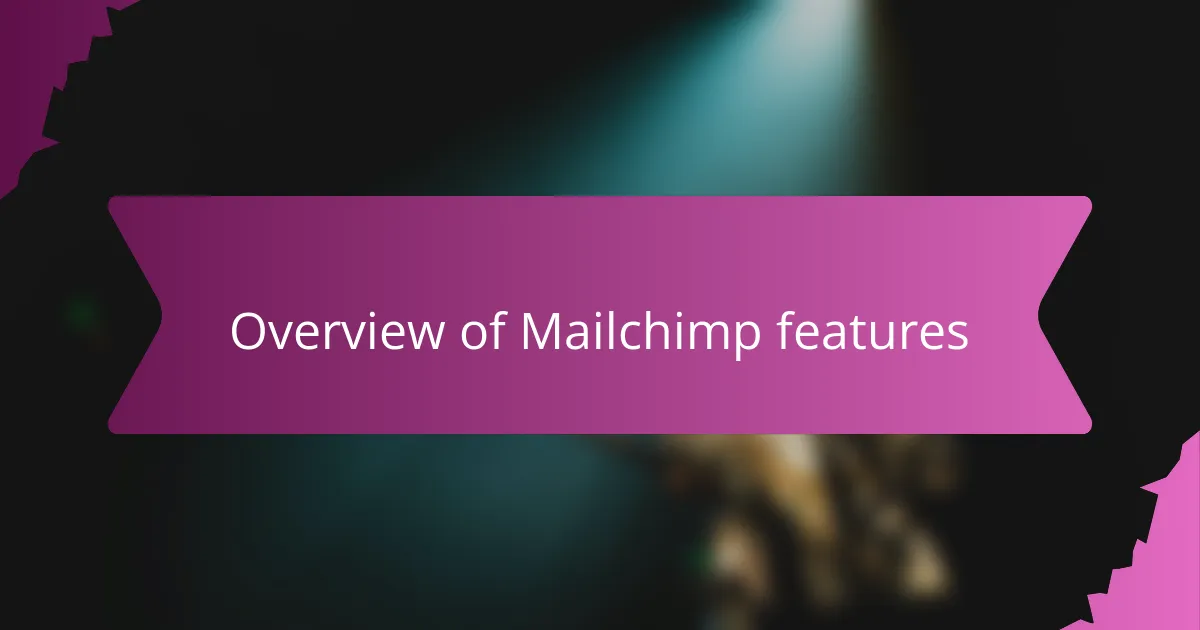
Overview of Mailchimp features
Mailchimp’s features have impressed me from the start, especially how user-friendly the platform is. I remember when I first tried to design a newsletter template—it was surprisingly intuitive, allowing me to focus more on my music stories rather than wrestling with complicated tools. Have you ever struggled with a clunky interface that just drains your creative energy? Mailchimp avoids that completely.
What I really appreciate is the automation feature. It’s like having a behind-the-scenes assistant who sends your newsletters exactly when your audience is most likely to read them. I set up a welcome email sequence for new subscribers, and it’s been rewarding to see how that personal touch helps fans feel noticed right from the beginning.
Segmentation is another feature that caught my attention. Targeting specific groups within my audience based on their interests or location has made my newsletters feel much more relevant. Have you ever received a message that was clearly not meant for you? I have, and it’s frustrating. Mailchimp helps me avoid that by ensuring my messages really speak to the people reading them.
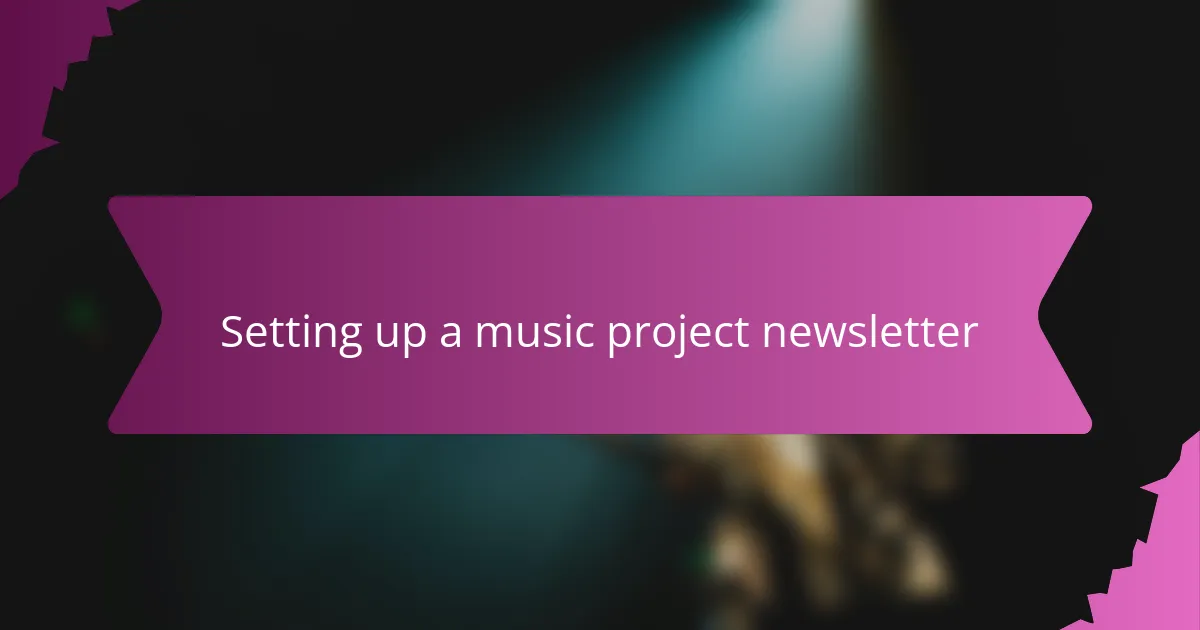
Setting up a music project newsletter
Getting started with setting up a music project newsletter felt a bit daunting at first, but Mailchimp made it surprisingly straightforward. I recall spending an afternoon choosing colors, fonts, and layouts that matched my music’s vibe—it felt like crafting a mini-artwork to send directly to my fans. Have you ever considered how much the look of your newsletter can reflect your sound before anyone even reads a word?
One thing I quickly learned is the importance of organizing your contact list. Segmenting fans by their favorite albums or concert locations helped me send more personalized updates, which in turn sparked better engagement. It’s like knowing exactly which song to play for each friend—you want it to resonate perfectly.
Finally, setting the right frequency was a lesson in itself. I experimented between weekly and monthly newsletters until I found a rhythm that kept fans eager, without overwhelming them. What’s the sweet spot for keeping an audience connected but not bombarded? For me, patience and listening to feedback made all the difference.
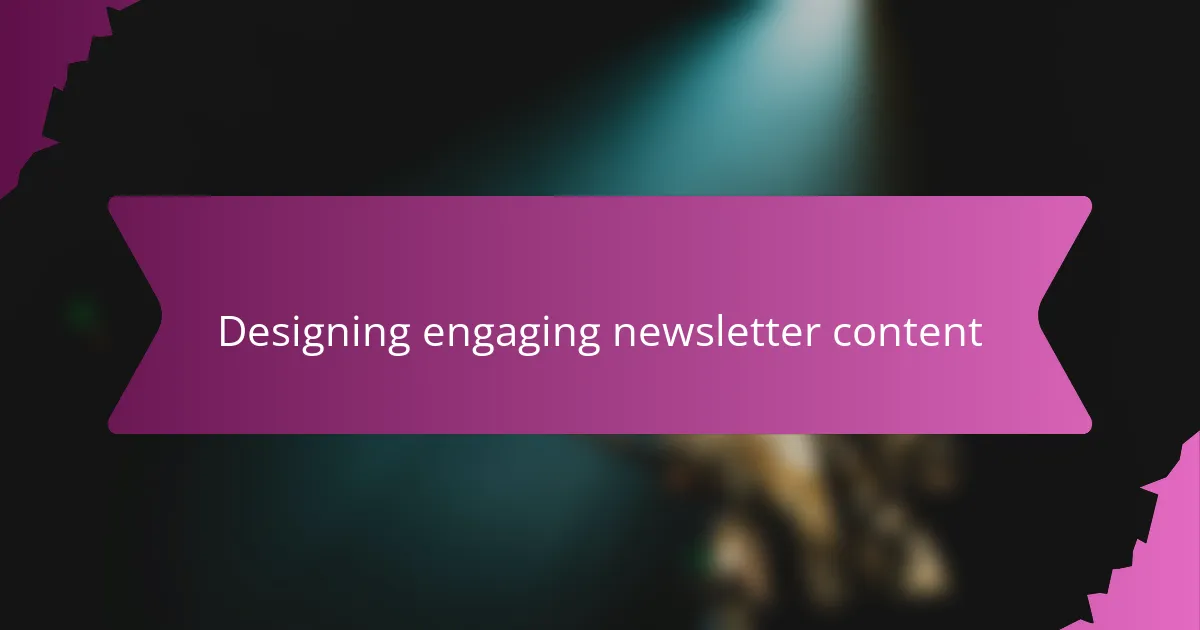
Designing engaging newsletter content
Designing engaging newsletter content means striking a balance between informative updates and storytelling. I’ve noticed that when I share personal anecdotes—like the inspiration behind a lyric or a funny mishap in rehearsals—my readers lean in closer. Don’t you find it’s those little stories that make the newsletter feel less like a broadcast and more like a conversation?
Visual appeal is just as crucial. Early on, I underestimated how much the layout and images affected reader interest. Experimenting with bold headlines and photos from gigs made my messages pop, inviting fans to explore further. Have you ever stopped scrolling because something looked visually inviting? That’s exactly the effect you want inside an inbox.
Finally, the call to action needs to feel natural, not pushy. Instead of bluntly asking fans to buy tickets or stream a track, I try weaving these prompts into the story. For example, after sharing a new demo, I’ll ask, “What do you think of this vibe?” This approach encourages engagement while gently guiding fans to support the music. What’s your favorite way to get fans involved without sounding salesy? I find curiosity works best.
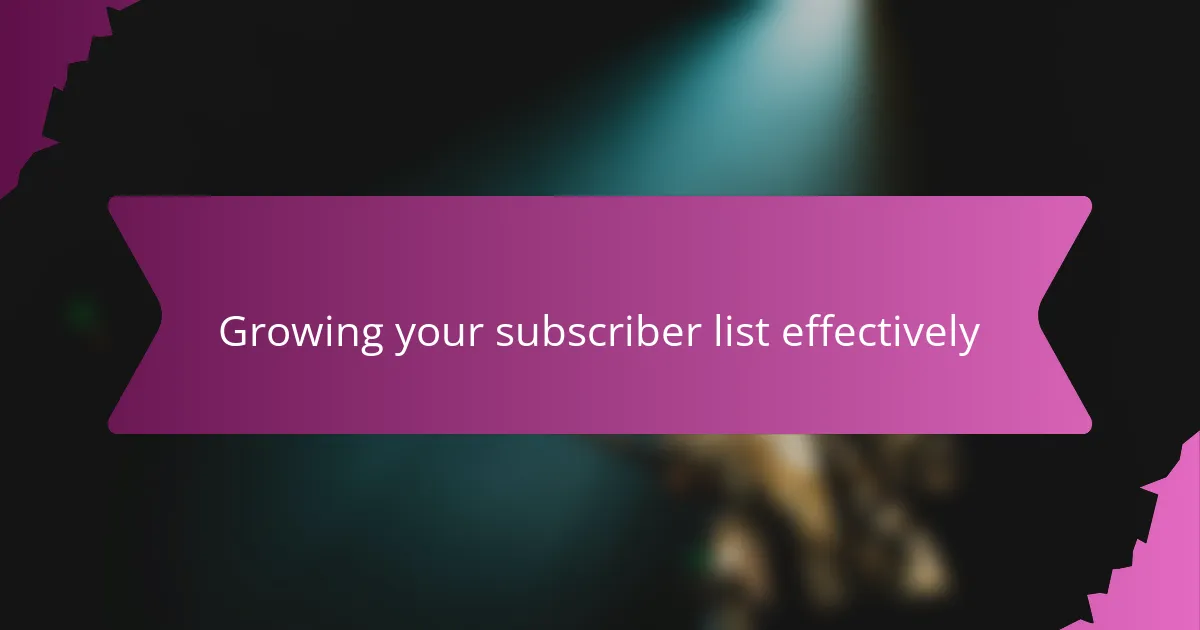
Growing your subscriber list effectively
Growing your subscriber list effectively starts with making it easy and inviting for people to sign up. I learned early on that placing a simple, clear sign-up form on every page of my website—not just the homepage—can significantly boost subscriptions. Have you noticed how the fewer clicks between curiosity and action, the more likely someone is to join? That small convenience really adds up.
Offering something valuable in exchange for an email address made a big difference for me too. Whether it’s an exclusive track, early access to tickets, or a behind-the-scenes video, giving fans a tangible reason to subscribe builds excitement instantly. I remember the thrill when my first download incentive led to a surge in sign-ups—proof that a little generosity goes a long way.
I also realized that consistency and engagement keep subscribers sticking around. It’s not just about numbers; it’s about nurturing each contact like a growing friendship. Have you ever felt disconnected after signing up for a list that only sends emails once in a blue moon? I try to avoid that by sending regular updates that feel personal and relevant—with Mailchimp’s tools helping me stay on track without overwhelming my schedule.
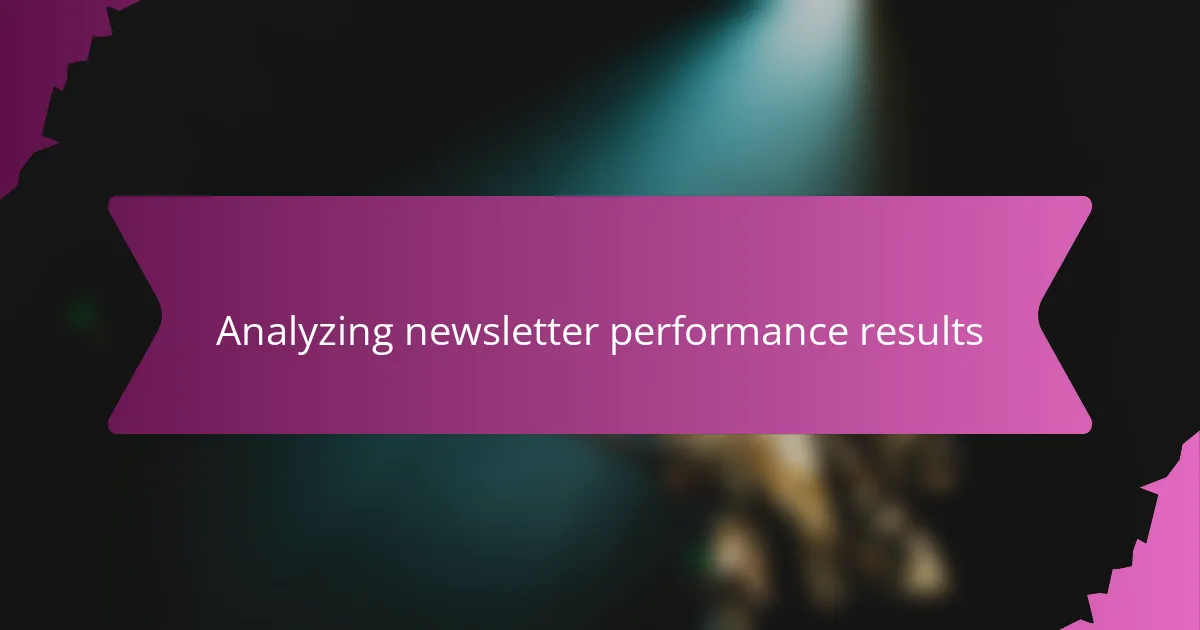
Analyzing newsletter performance results
Analyzing newsletter performance results has become one of my favorite parts of the whole process. Mailchimp’s detailed reports let me see exactly who opened my emails, clicked links, or bounced away, which feels like having a backstage pass to my audience’s real reactions. Have you ever wondered which stories or offers really hit the right chord? These insights have helped me fine-tune my approach in ways I never expected.
Sometimes, I’ve been surprised to find that a newsletter I thought was just “okay” actually outperformed others by a wide margin. It made me realize how unpredictable audience preferences can be, especially with music fans who crave authenticity. By paying close attention to open rates and click patterns, I’ve learned to discard assumptions and truly listen to the data behind the scenes.
Beyond numbers, I track engagement trends over time to spot what content sparks ongoing interest. For instance, newsletters featuring behind-the-scenes clips or early song releases consistently earn more clicks, which tells me those personal touches matter more than flashy announcements. Have you ever tested what your fans respond to most? I’d say the key is treating these results not just as stats, but as conversations with your listeners that help the music project grow.